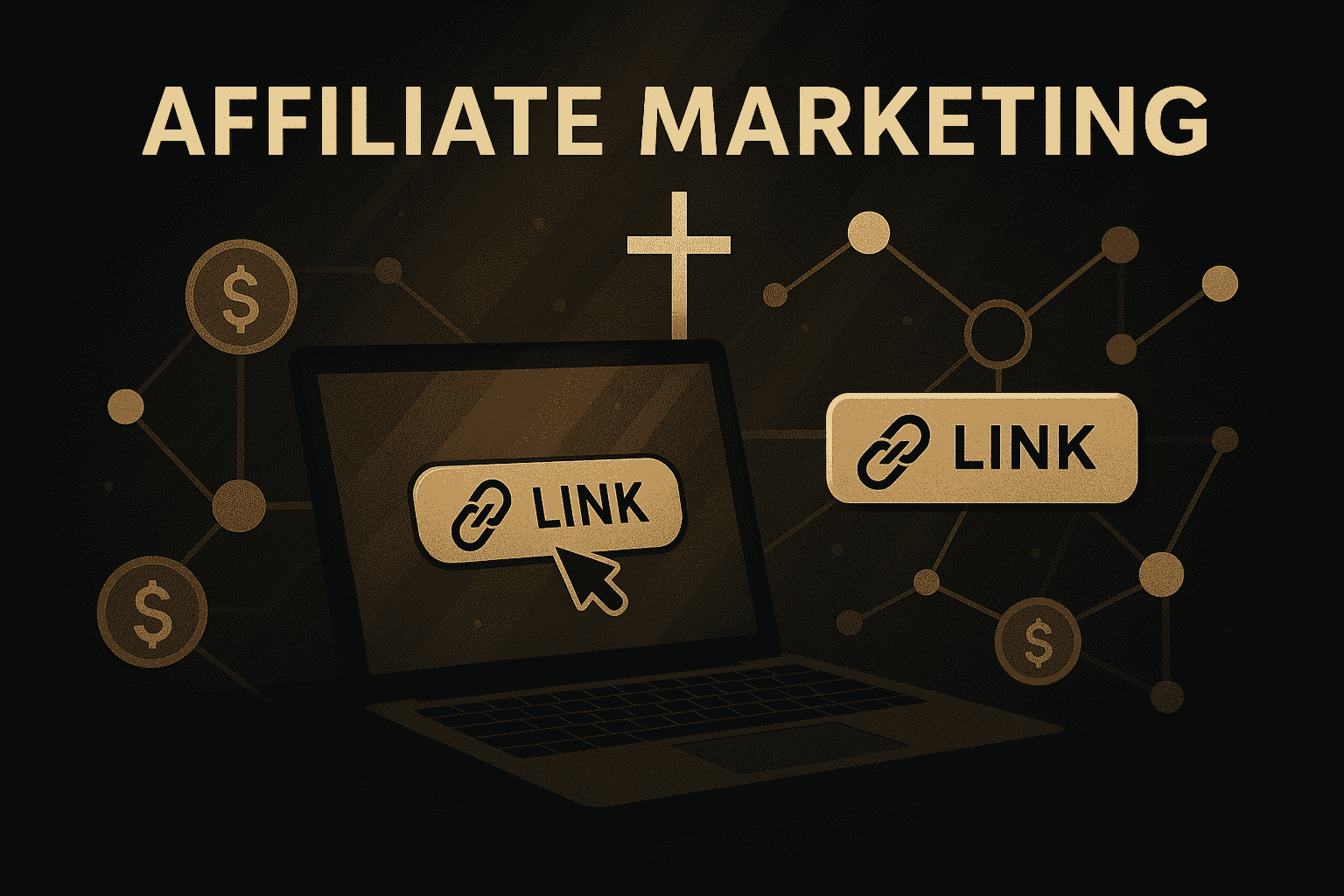Table of Contents
- How do you structure your prompts for ChatGPT? ❓
- Key Highlights 🔑
- Introduction 📖
- Understanding ChatGPT Prompts in 2025 🤖
- Fundamental Elements of High-Quality Prompts 🛠️
- The Most Effective Prompt Structures for Consistent Results 📊
- Types of Prompts for Different ChatGPT Tasks 🧩
- Examples of Effective ChatGPT Prompt Formats 📝
- Prompt Engineering Best Practices (2025 Edition) 🛠️
- Common Mistakes to Avoid When Writing Prompts ⚠️
- Refining and Improving ChatGPT Prompts Over Time 🔄
- Advanced Prompting Techniques for 2025 🚀
- Conclusion 📝
- Frequently Asked Questions ❓
How do you structure your prompts for ChatGPT? ❓
To get the most out of ChatGPT, begin with a simple question or give a clear idea of what you want. 📝 Tell us if you need any special style or format. 🎨 You can also show examples if it helps. 💡 When you give clear info, the AI answers better. 🤖 This makes the response fit what you need, and you will use the best prompt structure for ChatGPT. ✅
Key Highlights 🔑
- Learn the basics of prompt engineering to get the best from any AI tool. 📚 Focus on using clear words, good context, and words that show what action to take. ⚡ This will help you make more effective prompts. 💪
- Find out the difference between ChatGPT and other large language models. 🤔 Know how these changes can affect GPT prompts for your use case. 🔄
- Learn how to build prompts for your target audience. 🎯 Change the tone, persona, and look of your text for creative content, a blog post, and more. ✍️
- Look at common mistakes that people make when writing prompts. ⚠️ Learn how to avoid these errors so you get steady and high-quality output every time. 🛡️
- Check out some best ways, approved by OpenAI, to make and update prompts. 👍 This will help you get better results in your workflow and on every landing page. 🌐
- See examples from real life in business, education, coding, and social media. 🌍 These will show you how to write effective ChatGPT prompts for any generative AI problem. 🧩
Introduction 📖
Writing good and effective ChatGPT prompts is key if you want to get the most out of AI in 2025. 🔑 Do you want to write a blog, come up with creative content, or make your everyday work easier? 💼 The way you set up your prompts can change everything. 🔄 A good prompt helps you get more helpful answers, fit your needs, and stay on topic. 🎯 As AI gets better and changes over time, knowing how to guide ChatGPT the right way becomes even more important. 📈 Learning this skill will help you in many ways and save you time. ⏰
This guide shares simple tips and shows you real examples. 📘 Here, you will find out how to make strong and effective ChatGPT prompts for all kinds of creative content, so you get better results every time you use it. 🌟
Understanding ChatGPT Prompts in 2025 🤖
 ChatGPT prompts are simple instructions that you give an AI model. 📝 These help shape the kind of answer you get, so it matches what you want. 🎯 As prompt engineering grows, the way you write prompts will change how useful generative AI tools are. 📈 If you have clear goals and use simple words, your GPT prompts can work for any job or target audience. 👥
ChatGPT prompts are simple instructions that you give an AI model. 📝 These help shape the kind of answer you get, so it matches what you want. 🎯 As prompt engineering grows, the way you write prompts will change how useful generative AI tools are. 📈 If you have clear goals and use simple words, your GPT prompts can work for any job or target audience. 👥
In 2025, AI models like ChatGPT will get better. 🚀 To get the most out of an AI tool, you need to be clear and share enough details. 🔍 Picking the right persona and saying what you want in your text will help the AI understand you better. 🧠 This can work for blogs, social media, business, or any other need. 🌐
Definition and Evolution of ChatGPT Prompts 📜
A ChatGPT prompt is the text or instructions you give to an AI tool. 📄 You use this to let the AI know what answer you want. 🤖 In the beginning, GPT prompts were simple. 🛠️ People asked basic questions or wanted quick facts. ❓ Now, GPT prompts help with workflows and are used to make creative content. 🎨 These prompts have become more detailed and complex. 🔍
Prompts are now used to choose how good creative content, business answers, or technical work can be. 💼 The way prompt engineering has grown shows that people want better results from generative AI. 📊 People first used simple questions, but now they use layered prompts that tell AI a role and set a format. 🎭
A good ChatGPT prompt is clear about the context. 🔍 It should tell the AI what role or persona you want it to use. 👤 These words help guide the AI tool to take the right action. ⚡ This will make sure you get answers that help you do what you want. ✅ With this, you can get the right response, whether you ask for a blog post, need blog ideas, coding help, or marketing support. 📝
Why Prompts Matter for AI Output Quality ❓
The way that you talk to an AI tool can change what you get from it. 🔄 If your prompt is too general, the answer might not meet your specific needs. ⚠️ When you use clear and effective prompts, you will get responses from the AI that match what you want. 🎯 This helps the AI tool give you a better answer. 🌟
You also need to give the right background when you ask the AI for help. 📚 When you add enough details, the AI knows what you want. 🧠 This will help, whether you plan a social media strategy, want to write a blog post, or need to make a report. 📊 Giving this context lets the AI do a much better job for your situation and the people reading. 👥
Using prompt clarity with the right context helps the AI tool give work that is not only right, but also what you need. ✅ The field of prompt engineering is getting better every day. 📈 Today, there is a big gap between a basic prompt and a careful prompt. 🔍 Good prompts can lead to smart ai results. 🤖 Weak prompts do not get you close to that. ❌
Key Differences Between ChatGPT and Other Language Models 🔄
ChatGPT is an AI model made by OpenAI. 🤖 It is not the same as AI models from other companies, like Google. 🌐 Most AI model sites let you put in prompts, but the way they work is not always alike. 🔍 With ChatGPT, the way it keeps track of what you say, talks to you, and uses a persona is special. 🎭 It stands out because of this.
Other language tools might ask for more special formatting. 📝 They can also miss out on chat memory and answers that feel like they come from a real person, like the ones you get with GPT prompts. 🧠 For example, ChatGPT can remember details from your past chats. 📂 This helps make workflows smoother, faster, and feel more like they fit you. ⚡ A lot of other tools can’t do this as well. ❌ Its persona style and memory in chat set it apart. 🌟
| Feature | ChatGPT (OpenAI) | Google Gemini / Other LLMs |
|---|---|---|
| Context Window | Large, supports iterative feedback | Varies, often smaller |
| Persona Assignment | Explicit roles/personas supported | Limited or less flexible |
| Memory Feature | Yes (paid versions) | Typically not available |
| Prompt Flexibility | Highly adaptable to creative content | Often more rigid |
| Output Formatting | HTML, markdown, custom formats | May have fewer options |
Knowing these differences can help you change your GPT prompts to get the most out of each AI tool. 🔧 This works for any blog post, business, or technical use case. 💼 You can use AI and GPT to write the blog you want or to help you with something for work. 📝 Understanding what each tool does best means you will get better results from your GPT prompts every time. ✅
Fundamental Elements of High-Quality Prompts 🛠️

Good prompts need to be clear. 🔍 They also should give enough background so the AI model knows what to do. 📚 It's helpful to give the AI a persona because that can make the answers better for you when you use any AI tool. 👤 When you make effective prompts, the AI can understand your needs for a blog post, text for social media, or help you with a technical task. 💻 A simple and clear prompt helps the AI give you good results. 🌟
How you write your prompt matters. ✍️ The words you use, the tone, and how the AI answers all shape how good the replies will be. 🎶 Learning more about prompt engineering helps you get answers that work better. 📈 This works for a blog or when you use your text for social media. 🌐 A good prompt makes sure every answer fits the target audience—no matter who they are. 👥
Clarity: The Impact on AI Response Accuracy 🔍
Clarity is important for every good prompt. ✅ If the instructions you give are not clear or do not have enough detail, the AI tool may give answers that are too general. ⚠️ These answers might not fit what you want. ❌ You may need to go over it again or try to make things clear. 🔄 Using the right words and asking for specific things will help guide the AI model. 🧭 This way, you get more accurate information that matches your needs. 🎯
Start by saying exactly what you need. 📢 Say things like, "Write a 300-word blog post for small business owners with tips on how to be productive." 💼 This kind of clear request is better than if you just say, "Write about productivity." 📝 When you give details, the AI tool can make content that fits what you want and works well for your readers of blog. 📖
A good way to do prompt engineering is to read your prompt and look for anything that is not clear. 🔍 If the prompt is hard to understand, you should change it to be simpler. ✏️ When you do this, the AI model can give you what you are looking for. ✅ This means you spend less time sending messages back and forth. ⏳ It also helps make your work with AI easier when you write your blog. 🌟
Context: Setting Expectations in Your Prompt 📚
Adding context changes a basic prompt into clear instructions for the AI. 🔄 When you give background information to an AI tool, you help set a good goal. 🎯 This lets the AI give answers that match your use case. 🔍 For example, this can help with a GPT-powered landing page, a social media plan, or even with an internal report. 📊
Think about the details you need so the AI model knows what you want. 🤔 You can say who your target audience is, which facts matter most, or add a link to a blog post if you want extra help. 🔗 For instance, you can ask, "As a recruiter at a tech company, write a LinkedIn post about the ai conference we have soon for new graduates." 👥
Giving context is a big part of prompt engineering. 🛠️ It helps the AI tool change what it writes, so you get ideas that fit how you work. 💡 This will give you clear, helpful, and useful tips for any workflow or setting. ✅
Tone, Format, and Role Assignment 🎭
You should always say the tone and format you want when you type a prompt for GPT. 🎶 You also need to tell the AI what role or persona to take. 👤 The tone helps guide how the AI tool answers, like making it sound formal, friendly, or fun. 😊 The format shows what the shape of the answer will be, like in bullet points, a blog post, or an email. 📝
When you tell the AI model what job to do, it lets the AI make answers that fit your specific needs. 🔍 For example, you can ask the AI to act like a marketing manager or answer like a university teacher. 👩🏫 This helps a lot when your workflows are aimed at a certain group of people or when you want info on something from a technical field. 💻
When you use the tone, format, and role in your GPT prompts, you get answers that match what you want. ✅ For example, say, “As an SEO expert, make a short, professional summary in bullet points for our company’s landing page.” 🌐 If you are this clear, the AI model can give you text that fits your brand. 📈 This is good for your new blog or email. ✉️
The Most Effective Prompt Structures for Consistent Results 📊

When you use your AI tool, the way you set things up is important to get good answers. 🛠️ A simple setup helps you make effective prompts. 📝 First, give a direct instruction. ⚡ Next, tell the AI what details it must use or what limits you want. 🔒 Last, be clear about what style and format you want in the answer. 🎨 The AI model will use all this info to help you. 🤖 You can get steady, top-notch replies for your blog, your work, or your creative idea. 💡
The next parts will talk about how to use helpful words, be clear, and keep the right mix of short and full answers. 📚 This can make your prompt engineering stronger and better. 💪
Actionable Language: Starting With a Directive 📢
Begin each prompt with an action word. ⚡ Pick words such as “draft,” “explain,” “summarise,” or “generate.” ✍️ These words let the AI tool know what you need. 🧠 This makes the AI model give you the type of AI content you want. 🌟
For example, do not ask, “Would you be able to explain this concept?” ❌ Instead, you should say, “Explain the concept of prompt engineering for beginners in 150 words.” ✅ This is a much better way to give GPT prompts. 📝 It helps the GPT be quick and clear when you need it for workflows. ⚡
Using strong action words makes things clear when you need to follow steps. 🔢 If you break down each task into small actions, you help the AI tool know exactly what to do for you. 🧩 This works well when you want to make a blog post outline, write social media posts, or see results from survey data. 📊 Doing things this way helps the AI give answers that make sense and are easy to read. 📖 It will also help your blog, your daily workflows, and all the work you do with GPT. 🌟
Adding Specific Details and Constraints 🔍
Specific details help to make good and effective prompts. 📌 If you leave these out, the AI model has to guess what you want. 🤔 This can make the AI give answers that are too vague, off, or not right. ❌ So, always tell the AI tool what you need. 📢 For example, you can say the word count, give the target audience, or ask for a certain format. 🎯 The AI will get it right if you share these things up front. ✅
For example, if you want a blog post, you have to tell the AI what you want. 📝 Say how long the blog post should be, what kind of tone to use, and who the blog is for. 👥 You might say, "Write a 500-word blog post for HR professionals about AI-powered recruitment, using a formal tone." 💼 When you give this kind of clear information, the AI will not give you a generic blog post. ❌ It helps you get the blog post that is right for your use case and is made for your specific needs. 🎯
If there are topics or formats you do not want, just say so in your prompt. 🚫 Being clear takes away any chance of the AI picking the wrong thing. 🔍 It helps the AI tool give you what you ask for. ✅ This saves time, fits what you need, and helps you work in a better way. ⏰
Balancing Brevity and Completeness ⚖️
If you give the AI tool too much information or details that are not important, it can make things confusing. ⚠️ A good way to do prompt engineering is to give just enough information and clear direction. 📝 This helps you get the right results from the AI. 🌟 But it is also good to keep things short. 📏
Try to make your prompts clear and go straight to the important point. 🎯 For example, you can say, "Summarise the attached report for executive review in no more than 300 words, using bullet points for key findings." 📊 This tells the AI tool or the AI model what you want from it, without too much extra detail. ✅ If you find the right balance, you will get more effective prompts. 💪 This helps you get the results you need from AI. 🤖
Keep trying out your prompts. 🔄 Change the text, and reduce what you have until it feels right. ✏️ The more you do this, the better you get at your workflows. 📈 With practice, your prompts and results will improve. 🌟
You can say that prompt engineering needs practice. 🛠️ It takes testing and learning over time. ⏳ The right prompts help a lot. ✅ Picking the right AI model and using good workflows are also important. 🔍 All this helps you get results that work for you. 🎯
Types of Prompts for Different ChatGPT Tasks 🧩

You can make prompts in different ways to suit your specific needs and workflows. 🔧 An AI tool can do a lot for you. 🤖 For one, you can use ai to get new ideas, sum up research, help with coding, or create text for a landing page. 📄 The way you put down your GPT prompts will shape what you get in the end. 🎨
It is good to know what prompt format works best for your use case. 📝 You should also know how to change the structure when needed. 🔄 Next, we will show some simple examples and tips. 💡 These tips will help any business, study group, or anyone doing a creative job use generative AI in the best way. 🌟
Idea Generation and Brainstorming 💡
Unlocking creativity with ChatGPT starts when you use prompts that help with thinking of new ideas. 🎨 These prompts let the AI tool review many choices. 🔍 They can even give you new suggestions. 📝 As a result, you get fresh and interesting ways for your blog post. 📖 You can also improve your social media plans or marketing workflow with these prompts. 🌐 Using an AI tool like ChatGPT can make your blog and ideas stand out. ✨
Here are some good examples of prompts that you can use to help you when you want to brainstorm: 📋
- Suggest ten good blog post topics for our tech startup if we want to reach university students. 🎓
- Share ideas for a summer marketing campaign that only uses social media. ☀️
- Give five creative content ideas for a health and wellness landing page. 🧘♀️
- List other ways to get the audience more involved for our weekly email newsletter. 📧
When you say who the target audience is, talk about the main use case, and set some important rules, you make it easy for the AI model to give new and useful ideas. 💡 This helps you take what it says and change it to fit your work. 🔧
Summarisation and Explanation Requests 📝
When you want to get the main ideas from hard documents, use prompts for your AI tool that give summaries and simple explanations. 📄 This way, the AI finds the most important things for you. 🔍 It helps you and other people see the hard stuff in a faster way. ⏩ These prompts are good for work in research and in education workflows. 📚
Effective examples include: 📋
- Summarise the attached market research report in 150 words for a meeting with senior managers. 📊
I read the market research report. 📖 The research shows the top areas where the business can grow and the products customers like most. 📈 There are new changes in what people want and how they shop now. 🛒 Our company can make more sales by focusing on online wants and fast delivery. 🚀 Many in the market use new ways to get customers, including social media and discounts. 📱 We are doing fine, but we must work faster to stay ahead. ⚡ The data also shares that the next year may be tough, but if we use new ideas and keep prices fair, our brand can do well. 💪 We see more buyers using smartphones, so good mobile ads and reviews can help us attract them. 📲 Work together, keep up with new trends, and listen to customer needs. 👥
- Explain blockchain technology to a secondary school student, using simple language. 📚
I will try to make it easy for you. 😊 A blockchain is like a notebook that everyone can read and write. 📓 When someone does something, like sending money or buying a game, that gets written in the notebook, which is shared by many people. 🌐 Nobody can change anything that is already written. 🔒 So, people feel safe and trust what is in it. ✅ There is no one boss over the notebook, but everyone helps keep it safe by checking new things people add. 👥 This is how things like crypto and NFTs work. 💰
- Write a concise, bullet-point summary of the latest AI trends for a LinkedIn post 📝
When you say who you want to read the output and how it should look, GPT prompts can help guide the AI model. 🧭 This way, the AI will give you a clear answer that fits what you need for your blog or work tasks. ✅ It can also help make the info better and easier to read on LinkedIn. 📱 People can get what they need and get it faster by using GPT prompts and other AI tools. ⚡
Coding, Debugging, and Technical Tasks 💻
ChatGPT can help you finish technical projects quicker. ⚡ To get the best help, give it clear and easy coding instructions. 📝 Tell it what you need when you ask for help with things like coding or fixing errors. 🛠️ Also, let ChatGPT know which programming language you use. 🐍 It helps to give it any limits or ideas you have for how you want the output to look. 🎨
Try using prompts like: 📋
- “Look for problems in this Python script and point out things that can be better. [paste code]” 🔍
- “Make an HTML landing page template for a small business consultancy.” 🌐
- “Say what this JavaScript code does so someone new can understand. Add clear comments.” 📝
- “Change this SQL query to help it run faster, and tell why you made these changes in bullet points.” ⚡
Giving these details lets the AI model know your use case. 🔍 This helps it fit the technical support for you. 💼 It also makes your AI workflows easier. 📈 You get more time in your day because of it. ⏰
Examples of Effective ChatGPT Prompt Formats 📝

Looking at real examples helps make prompt engineering feel easy to use. 📘 You will see that the best ChatGPT prompts often change depending on the use case. 🔄 Some of the prompts work well for creative content, some help people learn things, and some are great for business research. 💼 It is good to know these formats, so you can give clear steps for any workflow or landing page. 🌐
Next, we will see some prompt templates for creative writing, helping with studies, and business tasks. 📚 You will learn how to change and use your GPT prompts for work or at home. 🏠 This will make you feel sure about using prompt engineering anytime you need it. 💪
Creative Writing and Content Composition ✍️
When you write creative content, it helps to use effective prompts. 📝 These prompts help your AI tool know the style, genre, and persona you want. 🎭 This way, the AI can make creative content that fits your blog, social media, or branding goals. 🌟 That is important because your target audience wants to read something that feels right and sounds real. 👥
Here are some good examples: 📋
- Write a 500-word short story that feels like something Agatha Christie would make. It should have a twist at the end that no one sees coming. 🔍
- Make a product description for a luxury skincare line that sounds like a poem. Use words that paint a picture in the reader’s mind. 🌸
- Write the start of a blog post. Make it feel like how The Guardian might talk. It should be about our eco-friendly business and pull the reader in. 🌍
- Make a fun and playful caption for World Book Day that would be good to use on social media. 📚
This text uses words like blog post, social media, and blog to connect it all. 🔗
Each of these prompts shows the AI model what you want for your audience. 👥 This helps the AI make creative content that fits the right persona. 🎭 The tone matches your blog or social media. 🎶 Everything comes together with your plan. 📈 This also helps your blog post or social media feel fresh and unique. ✨ It is made just for you. ✅
Educational and Tutoring Queries 📚
Educational prompts make it easy for you to learn and get new things. 📖 If you give your AI tool a specific role,and set up answers that match what the learner wants, it can be like a good tutor for you. 👩🏫 This lets you use AI in a way that helps all people learn better. 🌟
Here are some types of prompts you can use: 📋
- As a maths tutor, I want to explain the Pythagorean theorem to you in a simple way. 📐 The theorem is about right-angled triangles. 🔺 A right-angled triangle has one corner that is a square corner, like the corner of a book. 📖 The side across from this square corner is called the hypotenuse. 📏 The Pythagorean theorem says that if you take the length of the two shorter sides of the triangle, and you square both of them (multiply each by itself), then add those two numbers together, you will get the square of the hypotenuse. ➕ In short, a² + b² = c², where a and b are the short sides, and c is the hypotenuse. ✅
- Here are the main reasons the French Revolution happened. 🇫🇷 The people in France had little money and food, but the king and nobility were rich and did not help them. 👑 A lot of people wanted more freedom and fair treatment. 🗽 The government spent too much money and went into debt, so it started to tax people more. 💰 This made life even harder for most people. 😔 New ideas about rights and equality from thinkers of that time inspired people to want change. 💡
- Three practice questions on cell biology for secondary school students: 🧬
1. Which part of the cell controls what comes in and goes out? a) Nucleus b) Cell membrane c) Cytoplasm
Correct answer: b) Cell membrane ✅
2. What makes energy for the cell? a)
When you say the role, who the answer is for, and what type of reply you want, your GPT prompts help the AI model give you learning help that is right for you. 👩🏫 This makes it easy to get support you need and at your age or skill. 📈 The AI tool and AI can both help you do well in your studies with these GPT prompts. 🌟
Business, Marketing, and Research Usage 💼
In business and marketing, using effective prompts can help you make work and talking with others easier. 📈 If you pick a clear persona and say to the AI tool which type of writing you want, you can ask the AI to do hard jobs or make new content. 🎨
Here are good prompt examples: 📋
- As a LinkedIn marketing expert, I want to share some good news with you. 📣 We have just launched our latest artificial intelligence tool for small businesses. 🤖 This tool is easy to use, and it can help save people time and money. ⏰ Small business owners can get better results with less work by using it. 💪 If you want to grow your business, now is the time. 📈 Please visit our LinkedIn page for more details and feel free to reach out with any questions. ❓ We are excited to help your business succeed. 🌟
- Here is a one-page briefing about the competitive landscape in our industry: 📊 Right now, there are several strong players. 💪 Each of them offers products like ours. 🛒 Some of these companies have more people and money. 💰 A few focus on one thing, while others cover a lot of needs. 🔍 Our main difference is in the way we support customers and give extra value through new features. ⭐ New companies enter the field every year. 📅 This means we have to stay ready and quick to change. ⚡ The need for our type of solutions is growing. 📈 But price and service set us apart. 💲 If we want to stay ahead, we have to keep improving and listen to what customers say. 👂 We must also stay active on platforms like LinkedIn and keep a strong online presence through our website and email. 🌐
- Hello, Thank you so much for joining our recent webinar. 👋 We hope you got a lot of useful information from it. 📚 We enjoyed having you with us and would love to know if you have any questions. ❓ If
With clear details, these prompts help the AI model give you useful info for your business or your research needs. 📊 The AI uses what you give it to create the right content for you. 🎯
Prompt Engineering Best Practices (2025 Edition) 🛠️
 To get the best results in prompt engineering in 2025, first look at the specific needs of your use case. 🔍 You need to know the target audience and how the AI model, like ChatGPT, works. 👥 Make your generative AI content clear and direct so it stands out. 🌟
To get the best results in prompt engineering in 2025, first look at the specific needs of your use case. 🔍 You need to know the target audience and how the AI model, like ChatGPT, works. 👥 Make your generative AI content clear and direct so it stands out. 🌟
Do regular testing and listen to feedback. 🔄 This helps you improve creative content for social media or any work process. 📈 Always keep your prompts simple, well-structured, and easy for people to read. 📖 If you do this, you get better results from generative AI tools and can make your workflows with AI work well. ⚡
Techniques Endorsed by OpenAI 👍
OpenAI has found some useful steps that help people do better at prompt engineering. 📘 Here are these ways: 📋
- Give clear information and background for each prompt so the AI model knows what you want. 🔍
- Give the AI, or AI model, a role or persona so it can better guide what to say. 🎭
- Use examples to show the AI what you need in the answer. This helps to avoid any mix-ups. 💡
- Say what format and length you want for the output to make sure the AI model stays on track. 📏
If you use these tips, you help the AI tool understand what you need. 🧠 For example, you could say, "Act as an HR manager and write a memo about remote work policy changes for staff. Use a positive tone and keep it under 200 words." 💼 This tells the AI to pick a role, think about the situation, use the right feeling, and give you the kind of answer you want. ✅ All of this helps you make a good prompt for AI. 🌟
OpenAI says people need to practice often and also pay attention to feedback while they work. 🔄 The more users practice with effective prompts, the better the AI gets at giving good answers each time. 📈
These things from OpenAI help you get the most out of AI. 🚀 They want you to keep trying and also learn from the feedback, so your prompts be better all the time. 💪
Multi-Step Instruction Structuring 🔢
Some jobs are hard. ⚠️ They can need an AI tool to help you do them step by step. 🔄 To help the AI work well, split the job into simple tasks. 🧩 This way, the AI tool knows what you want, and it can do the job better. 🌟
Recommended methods include: 📋
- First, write what the main parts of a business plan are. Next, make the executive summary for our tech sector audience. 💼
- List five blog post ideas on AI in healthcare. Then, pick the most unique one and write a short starting paragraph. 🏥
- Step 1: Say what the research article is about in 200 words. Step 2: Use bullet points to show three key findings. 📊
- Write code for a basic html landing page. After, give three ideas to make the design better for more conversion. 💻
This easy step-by-step way helps your AI model stay on track. 🧭 It makes things easier for you. ✅ The AI can work better and your workflow will be smooth. ⚡
Iterative Prompt Refinement Strategies 🔄
Iterative prompt refinement is when you improve your GPT prompts again and again. 📈 First, you see what the AI tool gives you. 🔍 Then, you change your instructions and try again. ✏️ If you keep doing this, your AI prompts will get better and correct over time. 🌟 This way, your GPT prompts stay simple and right. ✅
Here are easy ways to do this: 📋
- Look at the AI tool’s first answer. You can add details that you did not say before. You may want to make the rules clearer so you get good results. 🔍
- Ask more questions if something is not clear. You can also ask for more info when you want it. ❓
- Give examples that show what a good answer looks like or what a bad answer looks like. This helps the AI model know what you like and what you don’t like. 💡
- Go back and read older prompts and answers. You should use what you learn from them when you work with the AI tool again. 📚
Each time you change your prompt, you get better at prompt engineering. 💪 You learn how to make effective prompts with your AI tool or use GPT prompts the right way. 📝 The AI model gives you good and clear results every time you try this. 🌟 This helps you know what your AI or GPT is able to do. 🤖
Common Mistakes to Avoid When Writing Prompts ⚠️
 When you use GPT prompts, it does not matter how often you use AI. 🤖 You can still make small errors. ❌ If your instructions in your GPT prompts are not clear or you leave out a key detail, the reply from GPT can be not very good. ⚠️ If you forget about the right set-up needed for different workflows, you also lose time. ⏳ So, to do well in prompt engineering, you need to know what mistakes to stay away from. 🛡️ That helps you learn the smart ways to do it right. 💡
When you use GPT prompts, it does not matter how often you use AI. 🤖 You can still make small errors. ❌ If your instructions in your GPT prompts are not clear or you leave out a key detail, the reply from GPT can be not very good. ⚠️ If you forget about the right set-up needed for different workflows, you also lose time. ⏳ So, to do well in prompt engineering, you need to know what mistakes to stay away from. 🛡️ That helps you learn the smart ways to do it right. 💡
The next sections here will talk about the mistakes that people often make with AI and GPT prompts. 📚 You will see some tips to help make your GPT prompts and workflows better. 🔄 This can help you get the answers that you want, so the information is useful and good. ✅
Overly Vague or Generic Instructions ❌
Vague instructions are a big problem in prompt engineering. ⚠️ When you do not give clear or detailed steps, the AI tool has to guess what you want. 🤔 Because of this, the results from the AI are often basic and may not fit your needs. ❌
For example, when you ask the AI to “Write an email to customers,” it is not clear enough. ✉️ Instead, say something like: “Draft a friendly, 150-word email to existing customers announcing our new loyalty rewards programme.” 📧 This way, you tell the AI model to use a friendly tone. 😊 You let it know who the target audience is and what length you need. 📏 You also make the purpose of the email clear for the AI. 🎯
To get the best results from AI in your workflows, make everything clear. 🔍 Say what you want to do. 📢 Say who you are talking to. 👥 Tell what your goal is. 🎯 If you do this, your prompts work well. ✅ Your AI tool will give you good results every time. 🌟
Unclear or Missing Context ⚠️
Missing context is a common problem that can make your prompt less clear. ❌ If you do not give enough background, the AI tool may not know what you want. 🤔 This can make the AI give you answers that are not helpful or not easy to understand. 😕
For example, if you say, “Summarise this article,” the AI model might not know who needs the summary or what ideas are most important. 📄 It can be better to say, “Summarise this article on healthcare innovation for a government policy briefing, focusing on cost-saving measures.” 🏥 With this, the AI can get key information and know what to do. 🔍
Always say why you need the information, who you are giving it to, and what topics you care about. 📢 When you use this context, the AI tool can give answers that fit what you want. 🎯 This helps with tasks and workflows in places like healthcare. 🌟 The AI is clear, right, and useful for you. ✅
Ignoring Formatting and Output Specifications 📝
If you do not tell the AI tool what kind of answer you want, it can be difficult to use the reply. ⚠️ When you need the reply in a certain format, like bullet points, a table, or HTML, you should say this in your prompt so the AI will follow your request. 📋
For example, you can ask, “List the top five benefits of our new AI model as bullet points that work for our chatbot FAQ page.” 🔍 This is better than just saying, “List the top five benefits of our new AI model.” 📝 When you want a technical answer, be very clear. 🔍 You might say, “Output this text as HTML code for our landing page.” 🌐
If you skip these steps, there be a chance you mess up your workflows. ❌ You may have to go back and fix things. 🔧 So, to make it easy, say your formatting and output needs in your GPT prompts. 📝 This helps you get what you ask for when making a blog post, working on a landing page, or doing any job with an AI tool or AI model. 🌟 Using this way keeps your blog, chatbot, and landing page working well. ✅ There is less extra work for you to do. ⏰
Refining and Improving ChatGPT Prompts Over Time 🔄
Getting good at prompt engineering is something you need to keep working on. 🛠️ You should read the answers from the AI tool, ask people what they think, and then change the details if you have to. 🔍 Doing this lets you make more effective prompts each time you use your AI tool. 📈 When you use feedback loops and try different ways to write prompts, the AI can give better and more helpful results. 🌟
As you practice, you get better at writing good and clear prompts for many workflows. 💼 This may be in business, at school, or while working on creative ideas. 🎨 Learning to do this helps you make the most of generative AI. 🤖 It does not matter if you use AI for work, learning, or your own projects. 🌐 You always get more out of it if you know how to give effective prompts. ✅
Testing and Analysing Prompt Performance 📊
Evaluating how prompts help people talk to an AI tool is very important. 🔍 First, you need to know the specific needs of your use case. 📝 After that, make effective prompts and use them to test how your AI tool handles different answers. ⚡ Look at each reply for things like how relevant, clear, and creative the response is from the generative AI model. 🎨 This helps you see if you get what you want. ✅ You can also try A/B testing in your AI tool. 🔄 This means you make small changes to prompts and see what works better. 📈 When you check the results, you can keep making everything better. 🌟 This helps your prompts match your target audience and what their interests are. 👥 At the end, your content strategies get better because you know what people want from your AI and your AI model. 📊
Using Feedback Loops for Enhancement 🔄
Adding feedback loops can help a lot with prompt engineering. 📈 When you look at each answer the AI tool gives, you can change your prompts to get better results in real time. ⚡ Users see how well the AI handles their specific needs. 👥 You can keep the good prompts and drop the ones that do not work. ✅ Getting feedback from people on social media and by email shows how strong and useful your prompts are for different groups. 📱 Working with this feedback makes creative content better. 🎨 Every time you talk to the AI or use it for healthcare or to build a chatbot, things get better and match what you want and need. 🌟
Adapting Prompts for Changing Requirements 🔄
As needs change, it is important to keep your prompts flexible so they can adjust to new situations. 🔧 You have to look for changes in how and why people use them. 🔍 This helps you make sure that your effective prompts fit the changing needs of your target audience. 👥 If you test and check your AI model often, you can get helpful insights. 📊 These insights let you make changes when you need to. ⚡ When you use feedback loops, you can take your basic prompt and improve it. 📈 This helps turn it into a reply that gives people what they want. ✅
Changing the words you use and the way you set up a prompt can help make the output better. ✏️ This is true in places like social media or in an email. 📱 If you work on your prompts, you keep all of the content important and useful for any place where you put it. 🌐 This helps you reach people in a way that is good for them. 👥
Advanced Prompting Techniques for 2025 🚀
Learning how to use advanced prompts in generative AI helps you get one step ahead. 📈 This will help you make effective prompts that match your specific needs. 🎯 With chain-of-thought, the AI model follows a clear path. 🧭 The outputs are more on point. 🔍 You can use prompt chaining or scaffolding when you want to add detail one step at a time. 🔢 This keeps the chat easy to follow. 📝
Contextual anchoring is important too. 🔗 It uses things from past chats and workflows. 📂 This helps the AI understand your persona better. 👤 The full AI experience gets better for things like social media or blog work. 🌟
Leveraging Chain-of-Thought Reasoning 🧠
Building effective prompts means using clear and simple steps when you need an AI tool to answer you. 🔢 If you use step-by-step logic, it helps the AI model—it can follow your thinking in order. 🧩 This way, you make it easy for ChatGPT to break big or hard questions into smaller parts. 📉 Then, whether you need a reply for social media or a landing page, the answer will match your specific needs. 🎯 The text will not confuse people, and it will fit what you want from the AI. ✅
If you add examples to your prompt, it helps a lot. 💡 For example, when you want to make a landing page or write good social media posts, using bullet points in your ChatGPT prompt gives better and more focused results. 📋 This way, the AI tool works better and you get a better user experience. 🌟 All of us get more clear and helpful answers from AI when we ask questions like this. ❓
Prompt Chaining and Scaffolding 🔗
Using prompt chaining and scaffolding can help you get better results with generative AI. 📈 If you break hard tasks into smaller parts, you guide the AI to fit your specific needs. 🧩 The AI uses the feedback it gets from each step to give better answers. 🔄 This keeps going, and the result gets sharper as you use it over time. ⏳
In short, chaining prompts gives you a clear way to work. 🧭 You can use it to get information and decide how answers will be given. 📝 This way is good for saving time and making the whole user experience better. ⏰ It also makes it easier for you to make effective ChatGPT prompts for any time you need help with AI. 🌟
Contextual Anchoring and Memory Utilisation 🔗
Contextual anchoring lets AI give better answers. 📈 It does this by linking replies to what you said before or to a bigger chat. 🔗 The AI can use these past talks like having a memory. 🧠 This means the AI remembers useful details that were shared earlier. 📂 When the AI talks, it keeps the chat smooth. ⚡
If you use this memory in prompt engineering, you can make more effective prompts for the right use case. 🔍 The AI will change to fit what people need as they chat. 👥 It can help with creative content, email writing, making plans for social media, and more. 📧 This way, the AI gives answers that fit what you want. 🎯 It makes your experience feel better and more personal. 🌟
Conclusion 📝
Effective prompt engineering helps you get the best results from generative AI tools like ChatGPT. 🚀 When you know your target audience and shape your prompts to fit real use cases, you get answers that meet specific needs. 👥 If you get feedback and use it to change your prompts, what you get from AI will get better over time. 🔄 AI is always changing, so using ideas like contextual anchoring can also make it work better. 🔗 When you go with these methods, your prompts will keep being good and up to date for AI. 🌟
Frequently Asked Questions ❓
What are the essential components of a successful ChatGPT prompt? 🔑
A good ChatGPT prompt is clear and uses simple words. 📝 It tells what you want with less text. 📏 The prompt should show things well and not be too long. ⚠️ If you add easy examples or basic questions, it can help get better answers. 💡 In this way, the ChatGPT model knows what you mean. 🧠 A clear prompt helps ChatGPT give the answers you want. ✅
How can I make my prompt more specific to avoid generic answers? 🔍
To get better answers from AI, you need to share clear details when you ask for help. 📢 Say what you are looking for. 🎯 Give the AI a goal, and show it some examples. 💡 This way, the AI will know what you want. 🧠 It will be less likely to give you a reply that is not clear. ❌ Use words that match what the task is about. 📝 Doing this can help you get the answers you need. ✅
Is there a difference between prompts for ChatGPT and other AI models? 🤔
Yes, prompts for ChatGPT are not the same as the prompts you use in other AI models. 🔄 This is because each model is built in its way and trained with different data. 📊 These details change how the system gets your instructions. 🔍 It also changes how it deals with the context and what kind of answers you get. 📝 So, if you want to get the best results from ChatGPT or another AI, you have to change how you write your prompts. ✏️
How do you structure your prompts for ChatGPT? ❓
To structure effective prompts for ChatGPT, start with a clear instruction or question, provide context if necessary, and specify the desired format or tone. 📝 This ensures that the AI understands your request fully and delivers relevant, coherent responses tailored to your needs. 🎯 Clarity is key for optimal results. 🔑
Thank you for reading! If you found this article helpful, please share it with others who might benefit. And remember, your journey is just beginning. Stay curious, stay faithful, and keep shining your light! ✨














